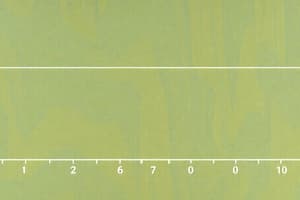Podcast
Questions and Answers
What is the SI base unit for temperature?
What is the SI base unit for temperature?
- Celsius
- Fahrenheit
- Kelvin (correct)
- Rankine
Which unit is defined using atomic clocks?
Which unit is defined using atomic clocks?
- Second (correct)
- Hour
- Day
- Minute
Which unit is NOT an SI base unit for physical quantities?
Which unit is NOT an SI base unit for physical quantities?
- Newton (N)
- Pascal (Pa)
- Joule (J)
- Minute (min) (correct)
What is zero Kelvin equivalent to in degrees Celsius?
What is zero Kelvin equivalent to in degrees Celsius?
What are new unit prefixes added in 1960 used for in the SI system?
What are new unit prefixes added in 1960 used for in the SI system?
What is one of the advantages of the SI system mentioned in the text?
What is one of the advantages of the SI system mentioned in the text?
What is the base unit for length in the SI system?
What is the base unit for length in the SI system?
Which unit prefix is commonly used to represent one million in the SI system?
Which unit prefix is commonly used to represent one million in the SI system?
What is the base unit for mass in the SI system?
What is the base unit for mass in the SI system?
How is the meter defined in the SI system today?
How is the meter defined in the SI system today?
Which unit is NOT a base unit in the SI system?
Which unit is NOT a base unit in the SI system?
What does the abbreviation 'SI' stand for in 'SI System'?
What does the abbreviation 'SI' stand for in 'SI System'?
Study Notes
Measurements and Units in Physics: Understanding the SI System
Measurements are the language of scientists, enabling us to quantify the world around us. In the realm of physics, the International System of Units (SI) serves as the universal standard for measuring length, mass, time, temperature, and many other physical quantities.
The SI System
The SI system is a logical and consistent set of units that originates from the French "Système International d'Unités." It aims to provide a clear, easy-to-use, and universally-accepted framework for scientific communication. The unit prefixes, such as kilo (k), mega (M), and nano (n), help to make measurements more manageable by providing a range from small to large quantities.
Length
The SI base unit for length is the meter (m). Originally defined as one ten-millionth of the distance from the Earth's equator to the North Pole, today it is defined as the distance traveled by light in a vacuum during 1/299,792,458th of a second. There are also SI-defined units for smaller and larger lengths, such as the centimeter (cm) and kilometer (km).
Mass
The base unit for mass in the SI system is the kilogram (kg). However, a more practical unit, the gram (g), is used in many everyday situations. Unlike length, mass is not defined by a physical object but is a measure of the amount of matter in an object.
Time
The SI base unit for time is the second (s). This unit was initially based on the motion of the sun and Earth but is now defined using atomic clocks. Longer time intervals include the minute (min), hour (h), day (d), and year (yr).
Temperature
The SI base unit for temperature is the Kelvin (K). This unit is an absolute temperature scale, with zero Kelvin being equivalent to -273.15 degrees Celsius, or absolute zero. Other temperature scales, such as Fahrenheit and Celsius, are still used but must be converted to Kelvin when comparing measurements.
Other Physical Quantities
The SI system also offers units for other physical quantities, such as force (newton, N), pressure (pascal, Pa), and energy (joule, J). Many of these units are derived from fundamental quantities, such as mass and distance.
Conversions
With new unit prefixes added in 1960, SI units have become more versatile than ever before. However, this also means that converting between units may require more careful attention. A useful tool for converting units is the conversion factor, which shows how one unit relates to another.
Advantages of the SI System
The SI system has numerous advantages. It provides a consistent framework for communicating measurements across disciplines and countries. It reduces the risk of confusion caused by different units, such as those used in British imperial measurements. The SI system also encourages accurate and clear reporting, and helps to standardize the measurement process across scientific disciplines.
In summary, the SI system is a universal language for scientists, providing a clear and consistent framework for measuring the physical world. By understanding the SI system, you can better communicate and analyze measurements in the realm of physics and beyond.
Studying That Suits You
Use AI to generate personalized quizzes and flashcards to suit your learning preferences.
Description
Test your understanding of the International System of Units (SI) in physics, covering length, mass, time, temperature, and other physical quantities. Explore the SI base units, prefixes, conversions, and advantages of this universal standard for measurement.




